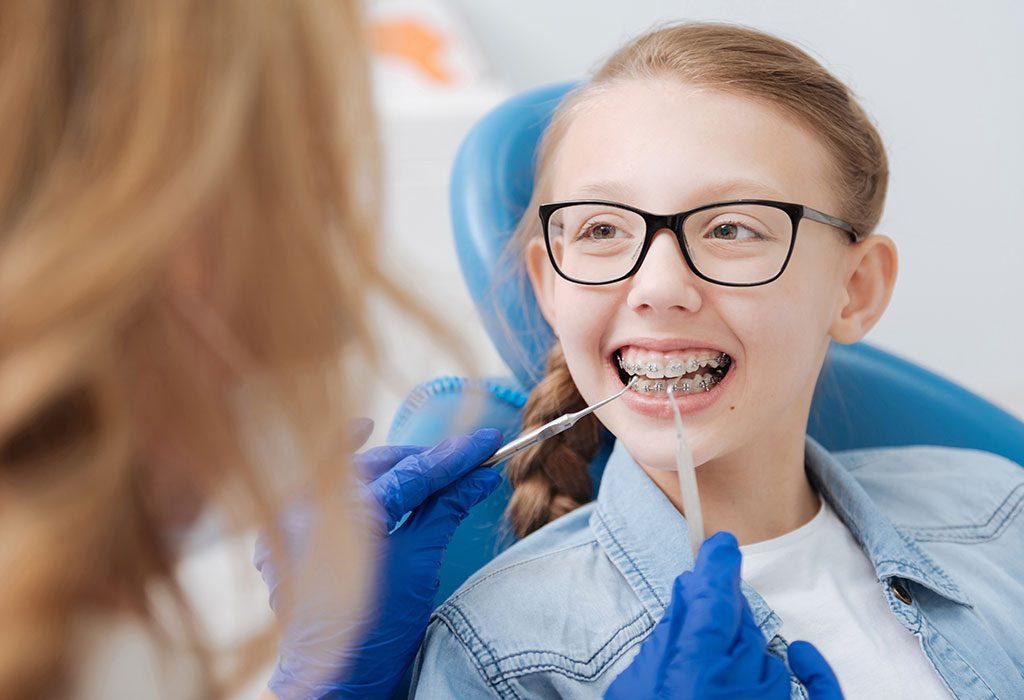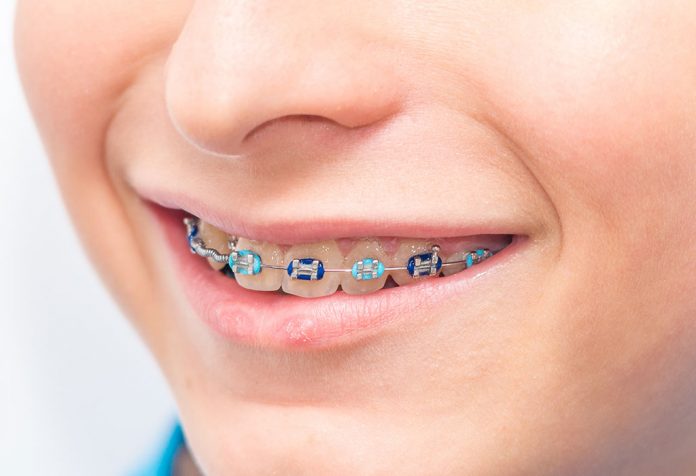In this Article
In your childhood, or even now, you may have seen kids wearing braces, even some of them who seem to have perfect teeth. This might make you wonder if your own child needs braces once his teeth start showing up. Installing children’s orthodontic braces is an important decision and needs a proper understanding of various aspects surrounding it.
Why Do Children Need Braces?
Teeth do not seem to always grow in the right manner for every child. Some kids might have crooked teeth, some might have overlapping teeth, or for many others teeth might seem to be crowded in a single area. A condition termed as malocclusion could result in upper and lower jaws being of different sizes, which could need a pair of braces for correction.
Some habits such as incessant thumb-sucking could cause a teeth to protrude outward. Hereditary reasons are also a major factor in the development of teeth.
At What Age Should Kids Get Braces?
Braces are a tool to straighten the teeth. Hence, they are even used by adults as well. However, the effectiveness is higher in childhood since the bone structure is still under development. An age of 10 to 15 years is when most children have braces. If, of course, your child has a more evident condition of misplaced dental patterns, braces could be used by the age of 7 years itself.

The First Orthodontist Visit – What to Expect?
In all matters related to the teeth and braces, it is best to consult a dentist. Primarily, he will make astute observations around multiple aspects of the mouth such as the arrangement of the teeth, their shape, the alignment of the jaw, and so on. By asking your child to bite and checking the movement of the jaw, your dentist might also follow it up by asking if your child has any specific problems while talking or while eating or if there are any clicking sounds in the bone.
In case of a further investigation, an x-ray of the mouth is carried out to check how the teeth are arranged or how the future teeth are bound to arrive. Making a mould of your child’s bite pattern gives a better picture of the jaw movement. All these help your dentist in making a decision if your child needs braces and, if so, which ones.
Signs That Your Child’s Teeth May Need Braces
A child may need braces in the following conditions:
- If he has lost his milk teeth quite early in life or even quite later.
- If the teeth in his jaw have a pattern of being crowded towards a certain area.
- The new teeth that emerge from the gums appear from an incorrect position.
- The teeth necessary for chewing do not make appropriate contact.
- If he cannot chew food properly or is unable to bit hard food items.
- If there are multiple instances where he has accidentally bitten his own cheek from the inside.
- If he has been sucking on his thumb or has used a pacifier even beyond 6 years of age.
Different Types of Teeth Braces for Kids
Here are some of the different types of braces available that a dentist may suggest for kids:
1. Damon Braces
These are specific braces which make use of slides instead of wires to hold the teeth correctly. It is a passive method of correcting the teeth since it doesn’t make use of any elastic. This can cause some problems as well since it tends to push the teeth more than necessary and could even result in disturbing an existing precision. On the other hand, since there are no rings, these braces are easy to maintain and can be kept clean for long.
2. A-shaped Braces
A comparatively innovative concept in the dental market that allows independence in adjusting and aligning the braces, without the requirement of dental personnel. The shape of the braces resembles the letter ‘A’. The retainers on these braces can be adjusted to suit what you’re eating. Furthermore, since they don’t apply a lot of pressure, the pain experienced is low. On the downside, users need to remove the braces before going to sleep.
3. Spring Alignment Braces
More convenient than others, these braces have a spring that is used to carry out the alignment. These braces are usually meant for the frontal 6 teeth of both jaws and no more. Although slightly on the costlier side, it is a value necessary for the absolute comfort of wear.
4. Titanium Braces
Quite similar to the usual steel braces, the component that is used is different. This makes the braces a tad stronger and comparatively lighter than the usual ones. These braces are not generally recommended unless you tend to have an allergy towards the nickel used in traditional braces. Their rarity results in their costs being higher than usual.
5. Invisalign Braces
One of the easiest braces to be used since they are quite literally a mould of your teeth in plastic. Generally used by people who have crooked teeth, these are extremely expensive and take a long time to be manufactured since they are unique to you. Their effect, however, is far more advanced.
6. Lingual Braces
Contrary to the usual frontal placement of braces, these ones are fitted behind the teeth, turning them into a sort of invisible braces for kids that are quite conscious of having them displayed in the school. However, these braces are quite expensive, and their installation procedure is lengthy and complicated. Furthermore, it causes a lot of irritation to the tongue later on.
7. Gold Plated Braces
Rarely used by kids, these are primarily preferred by people who want a classy look for their braces, or if they are allergic to the nickel coating. Made out of stainless steel, they are pretty much similar to the traditional ones in other aspects.
8. Clear Braces
Another type of braces that are slightly invisible, these have a clear transparent look to them which can be available in different shades, too. Stronger than usual, they also tend to have higher friction, which results in the possibility of making teeth brittle, and causing trouble while removing them after the procedure.
9.Self-Ligating Braces
To avoid constant visits to the dentist, such braces are used to reduce the treatment time and minimize dental review, too. These are expensive since they are made to suit your pattern and, hence, require minimal to no adjustment later on in life. Since they use no elastic and only a wire that passes through brackets, the pain and jaw discomfort is highly reduced.
10. Traditional Braces
The most common of them all, these are simply made out of stainless steel. A bracket is glued to the tooth and a wire is put through that is held with elastic ties. Most people these days avoid using these braces since using them comes with the condition of avoiding chewing gums or chips, as they can get easily stuck.
How to Take Care of Braces?
Taking proper care of braces is important for maintaining hygiene and for good oral health of a child. Know how to take care of braces:
- Always brush your teeth after each meal to remove any stuck food particles.
- Avoid sugary foods or sticky items and align braces for each meal.
- If a wire or bracket has loosened, check with your dentist immediately.
How Much Do Braces Cost for Children?
Braces for children can cost anything from a range of Rs. 18,000 – Rs. 60,000 for the usual metal or ceramic braces, and more than Rs. 70,000 to about 2 lakhs for extremely advanced and customized braces.
Children’s braces and dentistry procedures are quite costly and making a decision is not a quick and easy job. By understanding all the options and choosing a brace that fits your budget and need, you can ensure your child’s dental health stays unaffected and resolves any problems that might arise.









